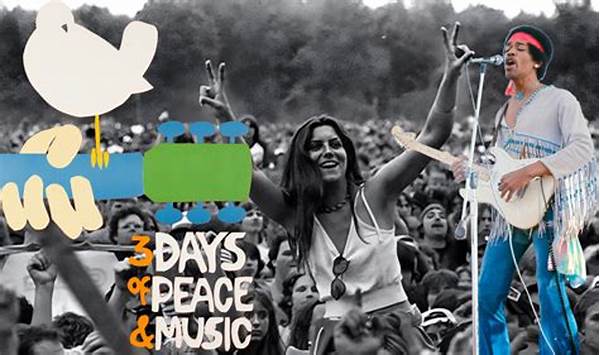Woodstock, the iconic music festival held in 1969, wasn’t just a concert; it was a cultural phenomenon. Amid the backdrop of a tumultuous era, Woodstock served as a beacon of hope, peace, and unity. The festival brought together some of the greatest musicians of the time and became synonymous with legendary performances that marked history. But what made these performances truly unforgettable weren’t just the artists themselves, but the instruments they wielded—a collection that has left an indelible mark on music history.
Read More : Geophysical Instruments For Land Surveys
Imagine standing amongst a sea of nearly half a million people as you listen to soul-stirring performances of Jimi Hendrix’s electric guitar riffs or the magnetic pull of Carlos Santana’s guitar solos. These artists, and many others, transformed mere music into an experience, using their instruments not only to create sounds but to convey messages of change and harmony. These musical tools became characters in their own right, shaping the sound and spirit of Woodstock. In this article, we’ll take a deep dive into the music instruments highlighted in legendary Woodstock performances and explore how they helped shape an era.
The Role of Guitars in Woodstock’s Magic
Guitars were undoubtedly the leading star of the Woodstock stage. From the screeching solos of Jimi Hendrix to the smooth, soulful sounds of Santana, guitars were the primary instrument that enchanted the audience. Hendrix’s rendition of “The Star-Spangled Banner” remains one of the most talked-about moments in music history. With every pluck of the string and every dive of the whammy bar, Hendrix’s guitar articulated the contradictions and turbulence of the era, showing just how powerful a single instrument could be.
Santana’s guitar performance, particularly during “Soul Sacrifice,” was another highlight. His use of the guitar as a voice of its own delivered an intensity and passion that mirrored the festival’s energy. These performances didn’t just entertain; they provoked thought and emotion, cementing the guitar’s status as not only a musical instrument but as a tool for storytelling and expression.
Drums: The Heartbeat of Woodstock
The Percussion Prowess
A Woodstock performance without drums would be like a ship without a sail. The rhythm section was crucial, and the festival saw some of the most electrifying drum performances ever witnessed. Take Michael Shrieve of Santana, for example; at just 20 years old, his drumming was a testament to raw talent and had the crowd entranced. His performance during “Soul Sacrifice” is often revisited as one of the defining moments of Woodstock.
Setting the Pace
The drums were not just keeping time; they were driving the performances. They gave each set its momentum, urgency, and life. Drum solos during the festival were more than fillers—they were highlights that showcased the prowess and creativity of the musicians. The thundering beats resonated with the crowd, weaving through the guitar melodies to create a symphony of sound that was both chaotic and harmonious.
Keyboards and the Power of Melody
While guitars and drums stole much of the limelight, keyboards played a crucial part in many Woodstock performances. The organ and electric piano added depth and layers to the music, enhancing the overall experience. Ray Manzarek’s use of keyboards with The Doors introduced a psychedelic vibe, painting musical landscapes that transported the audience to another realm.
The Artistry of Bass Guitars
The Backbone
Bass guitars, often underestimated, brought depth to each performance at Woodstock, supporting the riffs and solos that defined many of the legendary acts. Bassists like Jack Casady of Jefferson Airplane delivered bass lines that were intricate yet solid, creating a foundation over which melodies could soar.
Read More : Music Instrument Upgraded With Bluetooth For Wireless Concerts
Adding Groove
In an era where peace and love were the mantras, the groove provided by the bass guitar was essential. It held the music together, giving room for freeform solos and improvisations without losing the rhythm, making it a subtle yet indispensable hero of the festival.
Brass and Woodwind: Adding Color to the Concert
While not as prominent as the guitars or drums, brass and woodwind instruments played an essential role at Woodstock. They added a rich tapestry of sounds, rounding out performances with a unique flair. Bands like Blood, Sweat & Tears brought a jazzy sensibility to the festival with their use of horns, offering a new dimension to the rock-heavy lineup.
The Lasting Impact of Woodstock Instruments
Woodstock wasn’t just a music festival; it was an emblem of cultural change, a revolution in the world of music, and a showcase of the instruments that became legends in their own right. These instruments didn’t just serve their traditional roles; they became extensions of the artists and central characters in the story of Woodstock. As a celebration of music and culture, the festival’s legendary performances continue to inspire generations, reminding us all of the power and magic that instruments hold.
This enduring influence invites us to reflect on our musical landscapes and recognize the power of instruments not only as tools for sound but as storytellers and symbols of change. The Woodstock performances stand as a testament to how music can transcend sound and become a beacon of hope and peace, forever altering the course of history.
